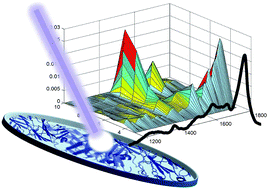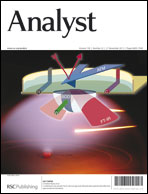The challenge of applying Raman spectroscopy to monitor recombinant antibody production
Abstract
UV resonance Raman (UVRR) spectroscopy combined with chemometric techniques was investigated as a physiochemical tool for monitoring secreted recombinant antibody production in cultures of Chinese hamster ovary (CHO) cells. Due to the enhanced selectivity of the UVRR, spectral variations arising from protein, small molecule substrates, and nucleic acid medium components could be measured simultaneously and we have successfully determined antibody titre. Medium samples were taken during culture of three CHO cell lines: two antibody-producing cell lines and a non-producing cell line, and analysed by UVRR spectroscopy using an excitation laser of 244 nm. Principal component analysis (PCA) was applied to the spectral sets and showed a linear trend over time for the antibody-producing cell lines that was not observed in the non-producing cell line. Partial least squares regression (PLSR) was used to predict antibody titres, glucose utilization and lactate accumulation, and compared very favourably with gold standard data acquired with the much slower techniques of ELISA and liquid chromatography. Further analysis of the UVRR spectral sets using two-dimensional correlation moving windows also revealed that spectral variations due to protein and nucleic acid concentrations in the medium during cell culture varied between each of the three cell lines investigated.


 Please wait while we load your content...
Please wait while we load your content...